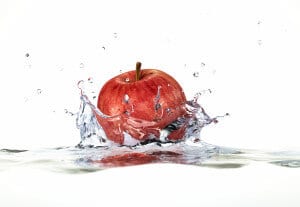Why Nutrition Matters for Event Success
Back to blog2014-10-15

Selecting the right kind of fuel and nutrition for event attendees is not an unimportant matter and by following some simply guidelines, it doesn’t have to be complicated either.
With advice from nutritionist and speaker Martina Cartwright, you can find the right combination of foods and nutritional benefits for your next event and ensure you maximize attendants’ energy levels and participation.
It is more important than you might think, so select the right food and snacks for conference, meeting and event attendants. Equally important is how often the attendees are fed. Martina Cartwright points out,
“Yes, organizers should care about the types of food being served at their events. To create active meeting participation, attendees should be well fed, but not overfed. Hunger leads to inattention and lack of focus, but too much sugar and heavy foods can cause drowsiness and fatigue. Small, frequent snacks throughout the day are the best way to keep blood sugar stable and prevent hunger.”
In order to get the best results and most attentive participants it is important to offer a carefully selected mixture of high nutrition foods. Dr. Cartwright recommends a mixture of complex-carbohydrates and protein. She suggests that an ideal composition of food option could look like this:
“Start the day with a light protein-complex carbohydrate mix like whole wheat toast with peanut butter, whole grain bagels or trail mix; yogurt; hard boiled eggs with toast. Continental breakfast consisting of pastry and fresh fruit is one of the worst choices…too much simple carbohydrate that is rapidly digested will lead to mid-morning hunger and a “sugar crash.” Protein from nuts, seeds, dairy, eggs or meat mixed with a variety of whole grains is best. To continue alertness, in the mid-morning, about 2 hours after breakfast, offer trail mix (unless someone has a nut allergy) or protein bars. For lunch, light sandwiches with a fresh veggie tray and/or baked chips for stress-reliving crunch. And for an afternoon snack, fresh fruit with nuts, seeds, or peanut butter and a cheese tray with whole grain crackers. Dinners should include a protein entree (fish, chicken, red meat or vegetarian protein like beans), a serving of veggies, and a small portion of dessert.”
We all know that too much sugar at any meal can have a negative effect on our ability to concentrate. Martina Cartwright here explains why large amounts of high sugar foods should be avoided or at least accompanied by foods with more nutritional benefits.
”High sugar foods like cake, candy, cookies, ice cream, pastries and juice, if offered, should be accompanied by a protein source. High sugar foods create a temporary sugar “high” followed by a quick drop…meaning, sugar in the morning or afternoon will lead to drowsiness and inattention. Having candy on the meeting room tables should be limited….bored attendees will eat more candy, even if they aren’t hungry, if the candy is in front of them.”
Another aspect to keep in mind is food’s influence on the digestive system. This can have a big impact on attendees comfort throughout the day.
“High gas producing foods like broccoli, cauliflower, beans and coleslaw should be limited…sitting for long periods of time, like in a meeting, can cause uncomfortable gas and bloating. I like to provide candied ginger and/or ginger tea after each meal to limit digestive discomfort.”
As a general rule, Martina recommends that small snacks or a meal should be consumed every 3-4 hours. In addition to this, there are several other ways to keep energy high and ensure the optimal conditions for participants. The suggestion below help combat and cater to people’s short attention spans and basic needs.
“At least 8 glasses of water need to be consumed each day. Moving around is important. The adult attention span is limited to a few minutes. In a meeting, allow for breaks every hour. Also, providing a meeting agenda that lists meals and break times allows participants to “plan” for telephone calls, restroom breaks and meals and leads to more productive meetings and attentive participants.”
Other ways to keep attendants energizes and alert is by monitoring the room temperature…too cold and the participants will be distracted, too warm and they will be drowsy… In the past, I have used aroma therapy to keep people alert…research supports this too. Small samples of various essential oils can be given to participants during breaks….mint and eucalyptus energize and trigger a sense of alertness; lavender is calming. Just check for allergies.”
Making small changes in room conditions, schedule and nutritional values of meals can have a great impact on your attendees energy and the overall outcome of your event. These are small changes that make a big difference.
To make sure you meeting is optimized on all levels, consider reading our article on the perfect room set-up and catch up on what to look for when choosing event apps.
Send a simple request. You’ll get a quick reply with fees and availability